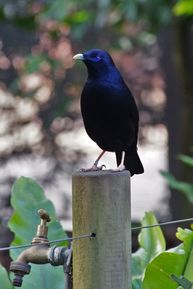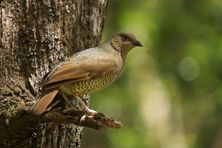
Shoppers Feedback:
Jan 17, 2017
Hello Ros,
I have now paid the invoice, but I would like to write to you just to say a big THANK YOU for getting me the Penguin!
The ChatterMate Penguin became a nice memory for me when I was in New Zealand, and I am so greatful to you for arranging so that I could have it! :-)
Thank you so much!!!!!!!!!!!
Regards,
Malin
Hi Ros,
Many thanks for your very kind email. I really appreciate your prompt reply!
I appreciate your advice regarding the decorations and customs. These are a gift for my daughter’s exchange student family so when she returns home on the weekend I will show her and see if she loves them as much as I do!
Thanks so very much again - I am truly grateful for your kind assistance.
Kind Regards
Bernadette
Ros,
Thanks again for the great customer service. It's a refreshing change!
Best regards,
Trevor
Hey Roz,
Thank you for your emails. Just loved my first order. The cute little Aussie bush critters are going to be used for an office Christmas decoration. My colleagues also liked them and talked about making an order to your site. I'll send you a photo when completed.
I'll be ordering more to send to my daughter's host family in America.
Fabulous service from you.
Kind regards,
Michelle
Thankyou. Order arrived today. One very happy grandson with his new beastly binoculars.
Regards,
Irene
- Home
- Wild Wonders
- Shop
- Aromas of Australia
- Australian Made
- Books
- Book Marks
- Christmas Decoration Sale
- Christmas Decorations
- Clocks
- Drink Holders
- Garden & Outdoor
- Gift Wrapping & Cards
- Home & Giftware
- Jewellery
- Keyrings
- New Products
- Pencils & Pen Holders
- Photo Frames
- Plush Toys
- Plush with Sound
- Sheepskin Rugs
- Stationery
- Stone Carvings
- Toys & Games
- Travel Goods
- Wedding
- Wild Figurines
- Wildlife Safety Products
- Wind Chimes
- Wine Charms
- View All Products
- Wildlife
- Australiana
- Explore
- Contact Us

Quick Facts
| Length: | 30 cm |
| Height: | - |
| Weight: | 204 grams |
| Colour: | - |
| Habitat: | Wetter forests and woodlands. Those in Atherton Tablelands are largely rainforest inhabitants |
| Food: | Mostly fruit but will eat insects and leaves during the winter month |
| Predators: | - |
| Status: | Secure in NSW, QLD & VIC. Not Present in WA, TAS, SA & NT |
Satin Bowerbirds are medium-sized birds. The adult male has striking glossy blue-black plumage, a pale bluish white bill and a violet-blue iris. Younger males and females are similar in colour to each other, and are collectively referred to as 'green' birds. They are olive-green above, off-white with dark scalloping below and have brown wings and tail. The bill is browner in colour. Young males may begin to acquire their adult plumage in their fifth year and are not fully 'attired' until they are seven.
Immature or female Satin Bowerbirds can resemble Green Catbirds, but are distinguished by a blue eye, a darker bill and a more scalloped patterning on the underbody. They also tend to be more olive-green rather than a bright green.
Satin Bowerbirds are found along most of the eastern and south-eastern coast of Australia.
Satin Bowerbirds prefer the wetter forests and woodlands, and nearby open areas, although those around the Atherton Tableland are largely rainforest inhabitants.
The mature male Satin Bowerbirds are mostly solitary, but the 'green' birds are often seen in groups or quite large flocks. In winter (outside of the breeding season), birds move to more open country, and occasionally enter orchards. At this time, mature males may join the 'green' bird flocks.
Satin Bowerbirds feed mostly on fruits throughout the year. During summer (breeding) the diet is supplemented with a large number of insects, while leaves are often eaten during the winter months.
The male Satin Bowerbird is perhaps the best known and well documented of all the bowerbirds in Australia. This fame partially stems from its practice of building and decorating a bower to attract females. This consists of two parallel walls of sticks, is built on the ground, and is used as a courtship arena during the breeding season. The male decorates it with bright blue coloured objects that it collects; blue clothes pegs, drinking straws and bottle tops are among the favourite stolen items, while bright blue parrot feathers, flowers and brown snail shells, make up the majority of decorations away from human habitation. A mixture of chewed vegetable matter and saliva is used to paint the walls of the bower. The bower owner meticulously maintains it throughout the year. The breeding season runs from, and both mature and immature males build bowers and display to prospective females.
On the arrival of a female, the male Satin Bowerbird leaps into a ritualised display of exaggerated movements, such as strutting and bowing, with wings outstretched and quivering, and accompanied by a variety of mechanical-sounding calls, such as buzzing and rattling interspersed with mimicry. One of the bower decorations is usually carried in the male's bill. If impressed, the female moves into the bower avenue for mating and then leaves to perform the nesting duties on her own, while the male readies himself for courting more prospective females.
The female places a loose nest of sticks in a tree or bush, up to 30 m – 35 m above the ground.
Last Updated: Thursday 9th January, 2014
BirdLife Australia - www.birdlife.org.au
BUSH e-TELEGRAPH
Signup for our monthly newsletter the "e-Telegraph"
Quick Links
Home | The Beginning | About The Land Down Under | Wild Wonders | Advertise on Wild Wonders | Christmas Decoration Sale | Christmas Tree Decorations | Drink Holders | Plush with Sound | Stone Carvings | Wildlife Wine Charms | Freebies | Australian Wildlife | Help Our Wildlife | Australiana | Photo of the Month | Explore The Land Down Under | Contact Us | Legal Notices


